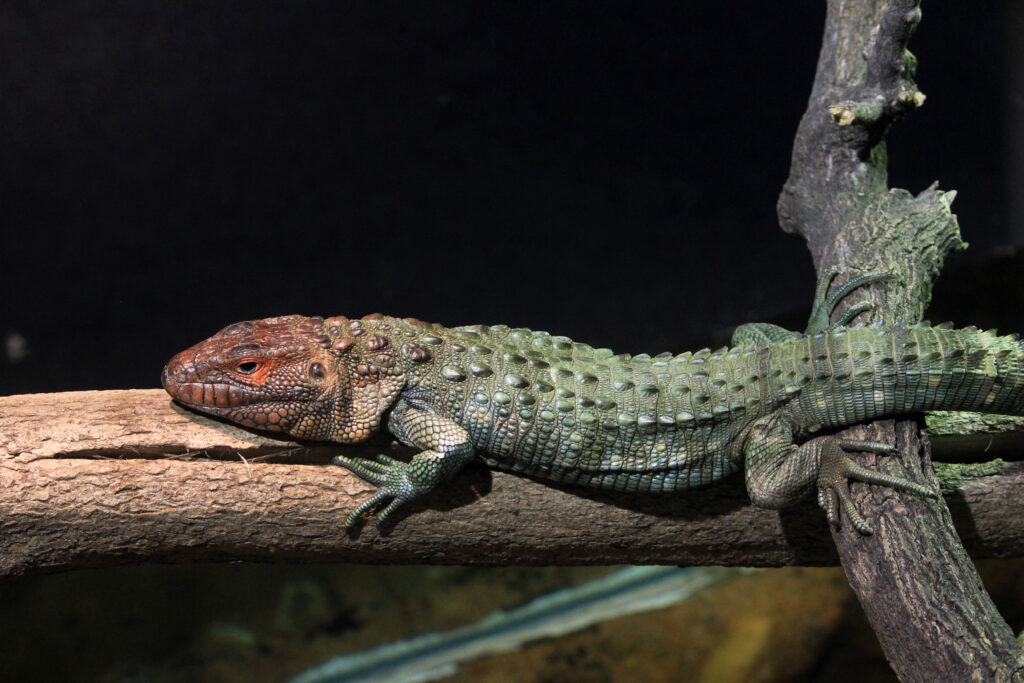ANIMAL: Northern Caiman Lizard Dracaena guianensis Type of Animal: Teeid Habitat: Flooded forest/woodland, rainforest, swampland, streams, river basins, mangroves Location(s): Guiana Shield, Venezuela, E Colombia, E Ecuador, E Peru, W Brazil Appearance: Large heavy set body, short powerful limbs, bulky red-orange head w/ greenish tinge, long flattened tail, mostly green w/ dark green banding, horned raised scales along dorsal area, caiman-like appearance, males larger & have broader brighter heads Food/Diet: Snails, crayfish, clams, shrimp, krill, crabs, fish, insects, insect larvae, small turtles, amphibians, rodents, young birds, eggs, fruit Status in Wild: Stable Conservation: Breeding in zoos, aquariums, wildlife centers, & herpetoculture Lifestyle: Solitary Additional Info: Called: Male Female Young: Hatchling Group: Solitary Weight: Male: 8-12 lbs Female: 6-9 lbs Young: 2.5 lbs Gestation: 6 months Life Span: 10-12 years Body Length: Male: 5 ft Female: 4 ft Young: 1.5 ft Tail Length: Male: 2.5 ft Female: 2 ft Young: 0.75 ft Main predators are large snakes, crocodilians, & jaguars. Also called water tegus, caiman tegus, & Guyana Caiman Lizards. Scales help provide protecting from predators. They’re excellent swimmers & excellent climbers. Used to be extensively hunted for skin until being provided protection in 1970. Since then, many bred on farms for skins. Often seen basking on branches overhanging water. Females usually lay 1-10 eggs. Tail used for swimming & defense. Active during day (diurnal). To escape predators, they can climb and/or swim. When shelled prey caught, lizard raises head, moving it into position at back of powerful jaws, crushing w/ strong back teeth, spitting out shell, & eating softer parts. When eating small turtles, they crush shell edges. Eggs most often laid in holes in riverbanks. Breeding in captivity reduces demand for collection from wild. However, these lizards don’t make best pets. Sexually mature at 8-12 months old. Fun Fact(s): Called caiman lizards due to caiman-like appearance/scales. While not aggressive, they have a powerful potentially dangerous bite due to jaws. They can also whip w/ tail as well as scratch w/ claws. Like crocodilians, they have 3rd eyelid for seeing underwater. These lizards are fairly intelligent & learn quickly. Not easiest animal to keep, since they need ample space for climbing/swimming/burrowing. Shedd Aquarium in Chicago hatched 1st members of this species in North America in 2005.

